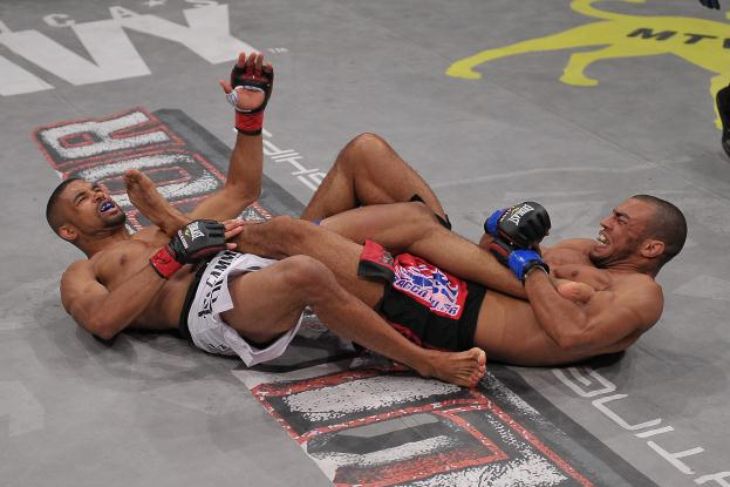A heel hook is a leg lock affecting multiple joints, and is applied by transversely twisting the foot either medially or laterally. The torsional force puts severe torque on the ankle, which in turn transfers torque to the knee.
There are several variations of heel hooks, with the most typical being performed by placing the legs around a leg of an opponent, and holding the opponent’s foot in the armpit on the same side. The legs are used to control the movement of the opponent’s body while the opponent’s foot is twisted by holding the heel with the forearm, and using the whole body to generate a twisting motion, hence creating severe medial torque on the ankle. A similar heel hook can be performed by holding the opponent’s foot in the opposite armpit, and twisting it laterally; a move which is referred to as an inverted, reverse or inside heel hook.
The heel hook is generally considered to be a very dangerous leg lock, with a high rate of injury, especially to ligaments in the knee. It is banned, except in advanced competition, in many combat sports featuring other leg locks such as Brazilian jiu-jitsu and Sambo. Where it is allowed, holding it for too long is considered a serious infraction. For example, the Ultimate Fighting Championship released welterweight Rousimar Palhares after he failed to release a heel hook on Mike Pierce even after Pierce tapped out.
Check out this brutal reverse heel hook during an MMA match:
Now watch how to counter the inverted heel hook:




















